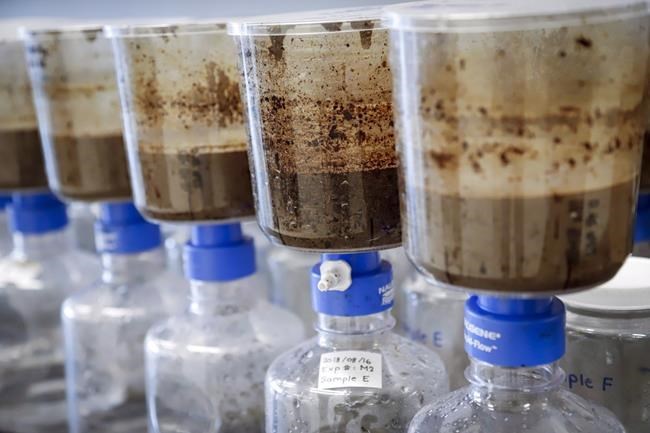EDMONTON — Environment Canada has opened an investigation into whether Imperial Oil broke federal laws with two releases of tailings from its Kearl oilsands mine in northern Alberta.
Environment Minister Steven Guilbeault said the move comes after weeks of sampling and testing of water near the site, where tailings ponds seeped into groundwater and where 5.3 million litres of wastewater overflowed from a containment pond.
"The decision to move from an inspection to launch a full investigation means that the file has reached a stage where officers will determine if charges are warranted," Guilbeault said.
"It means the process is underway to hold the company to account."
Imperial said it will co-operate with investigators.
"We have been providing information on the situation at Kearl and have hosted regulatory officials for tours and testing at our site," spokeswoman Lisa Schmidt said in an email.
In May 2022, Imperial workers discovered what they at first called discoloured water seeping from one of the mine's tailings ponds. The substance was later found to be groundwater mixed with mine tailings.
Another release in February sent 5.3 million litres of contaminated surface water overflowing from a containment pond.
Environment Canada has confirmed the presence of hydrocarbons and naphthenic acids in a small fish-bearing lake located almost entirely within Imperial's lease. Federal inspectors have already said they believe the tailings-contaminated groundwater and surface water to be hazardous to wildlife.
Such releases could be found to violate the Fisheries Act.
At the time the first release was discovered, both Imperial and the Alberta Energy Regulator failed to keep area First Nations and responsible governments updated, even after it realized the seepage contained tailings. That failure provoked widespread outrage that resulted in three separate investigations — one by Alberta's information commissioner, one by the House of Commons environment committee and a third-party consultant review commissioned by the regulator's board.
It also led Guilbeault to propose a notification and monitoring working group. That group, currently being formed, could include industry, Alberta, Ottawa, the Northwest Territories and area First Nations. The details are now being discussed, but will likely have to wait until after the Alberta election on May 29 to be firmed up.
However, a spokeswoman in Guilbeault's office said the group would likely have two roles: ensuring all affected parties are notified early and often in the case of another leak and monitoring the impacts and cleanup of such an event.
It will be separate from Alberta's Oilsands Monitoring Program, which is intended to track long-term changes in the local environment.
First Nations have asked for that body to undertake a risk assessment of all tailings ponds in the oilsands region, which hold more than 1.4 trillion litres of toxic wastewater.
"We need to study the risk from the tailings ponds and the risk to human health so that we can better understand the gravity of the problem," Guilbeault said.
The environment minister for the Northwest Territories — downstream from the oilsands — is on board with the proposed working group.
"We look forward to action to meet these commitments because transboundary water management agreements only work if all parties commit to information-sharing," Shane Thompson said in a release.
Schmidt said Imperial has installed a vacuum system to collect shallow groundwater by the pond, which continues to seep. It has also installed a series of pumps and trenches to track the plume and prevent it from spreading.
"Water testing has indicated drinking water is safe," wrote Schmidt. "There continues to be no indication of impacts to wildlife or fish populations."
This report by The Canadian Press was first published May 4, 2023.
Bob Weber, The Canadian Press



